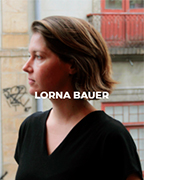ART AND ACTIVISM IN LATIN AMERICA is a project conceived by Despina, with the support from the Dutch organization Prince Claus Fund. The project extended for three years (2016, 2017 and 2018). Each year, a theme guided a series of actions and events, including occupations, workshops, talks, film screenings, exhibitions, public talks with important names from the contemporary artistic + activist thought and a residency programme. For this second edition, the theme was Body.
***
Theme’s presentation
by Bernardo José de Souza e Consuelo Bassanesi
I
Simultaneously the body constitutes the essential instance of our relationship with nature and the possibility to transcend it, moving towards what Western civilizations understand as the cultural sphere or second nature. On the other hand, this same body (to be clear, body = body + mind) is always reminding us of its organic and perishable condition, even though our intelligence and ability to overcome limits imposed by biology have led us to invest it with both symbolic qualities and political and moral predicates, as well as attributes external to our initial constitution, namely, a set of technologies that seem to emancipate us – that is to say, only partially – from our undeniable animal nature.
Throughout history, the marks of many successive battles between mankind, as well as between mankind and nature, have been inscribed in bodies and biographies. But from this basic unity of contact with the world, other forms of articulation of the human species followed, advanced structures in our relationships with each other and with the environment in which we managed to develop: groups, tribes, societies and civilizations emerged to form a larger body, able to address a series of challenges posed by the fear and risk of death and extinction.
Then at a certain point in the process of civilization, mankind understood that it could subordinate other men through the power of State, established by the then unequal power relations that would no longer be removed during the course of our journey on this planet. In the wake of these “achievements”, there were many peoples, races, genders and cultures who were subjugated by certain groups in an effort to achieve greater levels of power. And so we arrive at the present stage, when the architecture of human relations disobeys the laws of civility that have been supposedly achieved, bringing us, in reverse gear, to the times when we lived as barbarians, subject to the law of the strongest, captured by the sagacious and insidious instances of biopower.
II
The body was domesticated. Culture, religion, morality, politics, successive colonizations, gender-norms, prisons and asylums, psychiatry, fashion, cosmetic medicine, virtual makeovers and perfumery alike, have long been determining how the body should be or behave. This body, as a rule, appears as male, white, western, productive, reproductive, efficient, and sanitized. And it is this same body that produces and builds these totalizing historical narratives. The remaining bodies are reduced, repressed, marginalized, criminalized. Those who are born in this ideal body are few, many try to fit in, and there are also those who expose their unconventional bodies in a head on, open and radical manner.
In a world where morality and politics are increasingly linked, what we propose is to shed light on these radical bodies: the black, queer, transgressor, political, feminist, libertarian, dirty, dissident, immoral, perverted, modified, non-binary body. Bodies that are powerful and assertive. Bodies that resist.
We are looking for bodies and rebellious minds that, by not being subject to the domination of devices built throughout history, carry a dynamic and disruptive force capable of unsettling the established structures of control and subordination through micropolitical resistance. We are looking for subject-bodies so that new – more democratic, multicultural and transgressive – narratives are spread, amplified and therefore heard.
***
PROGRAMME
MAY AND JUNE
May 2 to June 30
“The body is present” – studio occupation with artists Lyz Parayzo and Rafael Bqueer.
June 27 / 7pm
Opening of the exhibition: “The bodies are the works”. Curators: Guilherme Altmayer and Pablo León de La Barra. Participants: Andiara Ramos, Ana Matheus Abbade, Anitta Boa Vida, Biancka Fernandes, Bruna Kury, Camila Puni, Carlos Motta, CasaNem, Coletivo Xica Manicongo, Eduardo Kac, Evelyn Gutierrez, Fabiana Faleiros, Fabio Coelho, FROZEN2000, Gabriel Junqueira, Indianare Siqueira, Katia Flávia, Kleper Reis, Lampião da Esquina, Luana Muniz, Lyz Parayzo, Maurício Magagnin, Mayara Velozo, Matheusa Passareli, Nathalia Gonçales, Odaraya Mello, Raquel Mützenberg, Ricardo Càstro, Tertuliana Lustosa, Turma Ok, Uhura Bqueer, Vagner Coelho, Ventura Profana & Jhonatta Vicente, Victor Arruda, Vinicius Rosa, Vítor Franco, Wescla Vasconcellos e Xanayanna Relux. More information here.
JULY
July 1 / 10.30 am
Workshop on basic principles of self-defense based on the Muay Thai technique. With Vagner Coelho and Fabio Coelho (part of “The bodies are the works” exhibition programme).
04 July / 4 pm
Performance: “Maiêutica”, with Raquel Mützenberg at Largo de São Francisco and the SAARA area. Feminine subjectivities: about the capacity to be reborn, to give birth again (part of “The bodies are the works” exhibition programme).
July 4 / 7.30 pm
Despina Cine Club (Post-pornography), curated by Andiara Ramos, Nathalia Gonçales and debate/talk with Kleper Reis and Érica Sarmet (part of “The bodies are the works” exhibition programme).
July 25 / 7 pm
Night of naked bodies: naturism. Despina Cine Club presents “A Nativa Solitária“, a film about Luz del Fuego, with Guilherme Altmayer. Fuxicu and cu yoga, radical freedom with Kleper Reis (part of “The bodies are the works” exhibition programme).
July 27 / 7 pm
NAVALHA: Manicure Show with Ana Matheus Abbade, Uhura BQueer, Vinicius Pinto Rosa, Ventura Profana & Jhonatta Vicente, Frozen 2000, Gabriel Junqueira, Ricardo Càstro (part of “The bodies are the works” exhibition programme).
AUGUST AND SEPTEMBER
August 1 to September 30
Residency Programme – selected artists for this edition: Carlos Martiel, Cristiano Lenhardt and Mariela Scafati.
August 4 / 8 pm
End of exhibition “The bodies are the works”: meeting with artists and march to “Turma OK” club – a night of bingo and performances with “the best of the house” in honor of Luana Muniz.
August 8 / 7 pm
“Undoing queer caravel in the afterlife of colonialism“
Public talk with Jota Mombaça. Find out here more information.
August 15 / 7 pm
“Becoming a body”
Public talk with Marta Dillon. Find out here more information.
August 22 / 7 pm
Public talk with artists in residency Carlos Martiel, Cristiano Lenhardt and Mariela Scafati + performance “Lamento Kayapó”, with Cuban artist Carlos Martiel.
August 26 and September 2
Talk, Listen & Exchange Circuit. Full programme here.
September 13 / 5 – 7 pm
“QueerCuirKuir” – screenprinting workshop with artist in residency Mariela Scafati.
September 14 / 7 pm
Despina Cine Club curated by Cinema KUIR.
September 21 / 7 pm
Opening of the exhibition “This same body“. More information here.
September 26 / 7 pm
“Bala Perdida”, performance with Cuban artist Carlos Martiel in the city centre of Rio de Janeiro.
September 26 / 7 pm
“Imagens Insubordináveis”. Public talk with artist Cristiano Lenhardt and curator Victor Gorgulho.
OCTOBER
October 5 and October 19 / 7 pm
Despina Cine Club curated by Cinema KUIR.
***
ABOUT THE ARTISTS IN RESIDENCY
 Carlos Martiel (born 1989, Havana, Cuba). He lives and works in New York and Havana. He graduated in 2009 from the National Academy of Fine Arts “San Alejandro,” in Havana. Between the years 2008-2010, he studied in the Cátedra Arte de Conducta, directed by the artist Tania Bruguera. Martiel is known for his visceral political performances that offer critique on contemporary issues associated with his country of origin and abroad. His work addresses topics of injustice, repression, discrimination, censorship and immigration. Martiel uses his body as a site for discourse, reflecting on the relations of power and social context.
Carlos Martiel (born 1989, Havana, Cuba). He lives and works in New York and Havana. He graduated in 2009 from the National Academy of Fine Arts “San Alejandro,” in Havana. Between the years 2008-2010, he studied in the Cátedra Arte de Conducta, directed by the artist Tania Bruguera. Martiel is known for his visceral political performances that offer critique on contemporary issues associated with his country of origin and abroad. His work addresses topics of injustice, repression, discrimination, censorship and immigration. Martiel uses his body as a site for discourse, reflecting on the relations of power and social context.
Martiel’s works have been included in: 57th Venice Biennale, Venice, Italy; Casablanca Biennale, Casablanca, Morocco; Biennial “La Otra”, Bogotá, Colombia; Liverpool Biennial, Liverpool, United Kingdom; Pontevedra Biennial, Galicia, Spain; Havana Biennial, Havana, Cuba. He has had performances at Walker Art Center, Minneapolis, USA; The Museum of Fine Arts Houston (MFAH), Houston, USA; Museo de Arte Contemporáneo del Zulia (MACZUL), Maracaibo, Venezuela; Padiglione d’Arte Contemporanea, Milan, Italy; Robert Miller Gallery, New York, USA; Nitsch Museum, Naples, Italy. He has received several awards, including the Franklin Furnace Fund in New York, USA, 2016; “CIFOS Grants & Commissions Program Award” in Miami, USA, 2014; “Arte Laguna” in Venice, Italy, 2013. His work has been exhibited at The Museum of Latin American Art (MOLAA), Long Beach, USA; Zisa Zona Arti Contemporanee (ZAC), Palermo, Italy; Patricia and Phillip Frost Art Museum, Miami, USA; Benaki Museum, Athens, Greece; National Museum of Fine Arts, Havana, Cuba; Tornielli Museum, Ameno, Italy; Estonian Museum of Art and Design,Tallinn, Estonia; Museum of Modern Art of Buenos Aires, Argentina; among others.
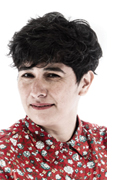
Mariela Scafati (born 1973, Olivos, Argentina) lives and works in Buenos Aires, Argentina. Studied Visual Arts at E.S.A.V. de Bahía Blanca and attended the workshops of Tulio de Sagastizábal, Pablo Suárez and Guillermo Kuitca. She is considered one of the most important Argentinian artists of her generation and her work is part of important collections, such as the permanent collection of the MALBA (Museu de Arte Latino-Americana de Buenos Aires). Since 2010, Scafati is an agent of the C.I.A – Center for Artistic Research.
In 1998, she participated in the group exhibition “Tres Paredes”. In 2000, she had her first solo show “Pinturas y pared”. After then, “Show Me Your Pink (2001)”, at Bis Gallery, Rosario, Santa Fé; “He venido para decirte que me voy” (2001), at Belleza y Felicidad Gallery, Buenos Aires; “Pintura gustosa” (2001), at Casona de Los Olivera, Buenos Aires; “Mariam Traoré” (2004), at Belleza y Felicidad Gallery, Buenos Aires; “Scafati, un cuadro” (2005), at Belleza y Felicidad Gallery, Buenos Aires; “Sos un sueño” (2009), at Abate Gallery, Buenos Aires; “¡Teléfono! en diálogo con Lidy Prati” (2009), at CCBorges, Buenos Aires; “Windows” (2011), at Abate Gallery, Buenos Aires; “Ni verdaderas ni falsas” (2013), at Instituto de Investigaciones Gino Germani, Buenos Aires; “Pinturas donde estoy 1998-2013”, at CCRecoleta, Buenos Aires; “Las palabras vienen después” (2014) at Maria Casado Home Gallery, Buenos Aires and “Las cosas amantes” (2015), alongside Ariadna Pastorini, at Isla Flotante Gallery, Buenos Aires. Later this year, she will be presenting a single project at Art Basel, in Miami (USA).
Scafati has also participated in various collective and collaborative projects linked to screen printing, education, radio and theater. In 2002, she co-founded the T.P.S.* – “Taller Popular Serigrafía”. Since 2007, she has been a member of “Serigrafistas Queer” **. She was part of the Belleza y Felicidad team, founder of the Proyecto Secundario Liliana Maresca, at the Escuela Secundaria Nº349 Artes Visuales, Fiorito, Lomas de Zamora. She has also coordinated a serigraphy workshop for the Cooperativa y Editorial Eloísa Cartonera and participated in several interventions of the “Brigada Argentina por Dilma”, with Roberto Jacoby, at the Sao Paulo Art Biennial in 2009.
Among her experiences linked to theater are the series of Kamishibai, Yotiteretú and a company of puppets with Fernanda Laguna; and her work in stage scenery for the biodramas directed by Vivi Tellas, at the Museo de la paloma y Las personas, with workers of the Theater San Martin (2014).
* The “Taller Popular Serigrafía” (TPS) operated in Buenos Aires between 2002 and 2007, founded by Scafati and other artists in one of the many popular assemblies that emerged from the December 2001 popular revolt / insurrection. From that moment, the collective intervened in the context of social movements, taking the workshop to the street and socializing the process of graphic production, stamping all kinds of clothing with images that tried to testify the political mood of each event.
** “Serigrafistas Queer” (SQ), self-perceived as a non-group, was born in 2007 and has been helding periodic meetings where slogans are discussed and screenprints and stencils are assembled for multiple prints to be used in the LGBT Pride March, held annually in different cities in Argentina. The material produced is kept and freely used again in other actions.

Cristiano Lenhardt (born 1975, Itaara, Rio Grande do Sul) lives and works in Recife, Pernambuco, Brazil. Graduated in Fine Arts from Santa Maria Federal University (1996-2000), he participated in the Torreão Artistic Orientation in Porto Alegre from 2001 to 2003. Among his solo exhibitions, we highlight: “O habitante do plano para fora” (2015 ) and “Litomorfose” (2014), at Fortes D’Aloia & Gabriel Gallery, in São Paulo; “Matéria Superordiária Abundante” (2014) and “Planalto” (2013), at Amparo 60 Gallery, in Recife; Naifs Biennial of Brazil (2016); 32nd São Paulo Biennial (2016); “Cruzamentos”, at Wexner Center for the Arts, Ohio / USA (2014); Rumos Visuais Itaú Cultural, São Paulo (2012); Mythologies – cite Internationale des Arts, Paris (2011).
He has received several national awards, among them: Bolsa Iberê Camargo – Artists Program Torcuato Di Tella University, Buenos Aires, 2011; “Projectile” – Prize for Contemporary Art, Funarte, Rio de Janeiro (2008); Videoart Contest Pize, Joaquim Nabuco Foundation, Recife (2007); SPA das Artes, Recife (2007 and 2004); 26th Salão de Artes Plásticas de Pernambuco (2006), among others. He also participated in artistic residencies in important spaces and institutions around the world, such as Phosphorus, in São Paulo (2013); Gasworks in London, UK (2013) and Made in Mirrors Foundation, in Guangzhou, China (2011).
Lenhardt’s artistic practice functions as an illusory game between the two-dimensional plane and the three-dimensional space. From videos, performances, observations, photographs, drawings and engravings, the artist seeks in ordinary and mundane reality tools to build a work that happens by attraction and transformation of materials and symbols.
***
PICTURES GALLERY (horizontal scrolling)
photos by Denise Adams, Frederico Pellachin and Raquel Romero-Faz
performance do artista residente cubano Carlos Martiel
performance do artista residente cubano Carlos Martiel
performance do artista residente cubano Carlos Martiel
performance do artista residente cubano Carlos Martiel
performance do artista residente cubano Carlos Martiel
performance do artista residente cubano Carlos Martiel
performance do artista residente cubano Carlos Martiel
performance do artista residente cubano Carlos Martiel
performance do artista residente cubano Carlos Martiel
performance do artista residente cubano Carlos Martiel
performance do artista residente cubano Carlos Martiel
performance do artista residente cubano Carlos Martiel
performance do artista residente cubano Carlos Martiel
performance do artista residente cubano Carlos Martiel
performance do artista residente cubano Carlos Martiel
performance do artista residente cubano Carlos Martiel
performance do artista residente cubano Carlos Martiel
performance do artista residente cubano Carlos Martiel
performance do artista residente cubano Carlos Martiel
performance do artista residente cubano Carlos Martiel
performance bala perdida realizada no centro do Rio de Janeiro
performance bala perdida realizada no centro do Rio de Janeiro
performance bala perdida realizada no centro do Rio de Janeiro
performance bala perdida realizada no centro do Rio de Janeiro
performance bala perdida realizada no centro do Rio de Janeiro
performance bala perdida realizada no centro do Rio de Janeiro
performance bala perdida realizada no centro do Rio de Janeiro
performance bala perdida realizada no centro do Rio de Janeiro
performance bala perdida realizada no centro do Rio de Janeiro
performance bala perdida realizada no centro do Rio de Janeiro
performance bala perdida realizada no centro do Rio de Janeiro
performance bala perdida realizada no centro do Rio de Janeiro
performance bala perdida realizada no centro do Rio de Janeiro
performance bala perdida realizada no centro do Rio de Janeiro
performance bala perdida realizada no centro do Rio de Janeiro
performance bala perdida realizada no centro do Rio de Janeiro
performance bala perdida realizada no centro do Rio de Janeiro
performance bala perdida realizada no centro do Rio de Janeiro
performance bala perdida realizada no centro do Rio de Janeiro
performance bala perdida realizada no centro do Rio de Janeiro
ART AND ACTIVISM IN LATIN AMERICA – ANO II (2017)
Project conception & coordenation
Consuelo Bassanesi
Theme conception & development
Consuelo Bassanesi e Bernardo José de Souza
Curatorial Support
Bernardo José de Souza e Pablo León de la Barra
Production, Communication & Documentation
Frederico Pellachin
Financial & Legal Management
Clarice Goulart Correa
Production Assistant
Pablo Ferretti
Selection Committee (Residency Programme)
Consuelo Bassanesi, Bernardo José de Souza e Pablo León de la Barra
Graphic Design and Logo
Pablo Ugá
Photos (performances and openings)
Denise Adams, Vinícius Nascimento e Raquel Romero-Faz.
“The bodies are the works” (curators)
Guilherme Altmayer e Pablo León de la Barra
Thanks to
Alexandre Rodolfo de Oliveira, Alexandre Sá, Ana Matheus Abbade, Bertan Selim, Bianca Bernardo, Eduardo Montelli, Laura Lima, Marcelo Velloso, Prince Claus Fund, Raphael Fonseca.






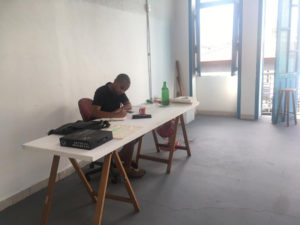












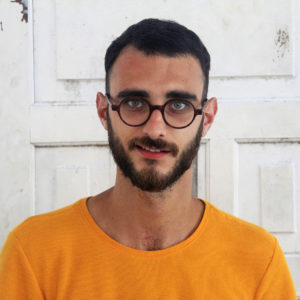


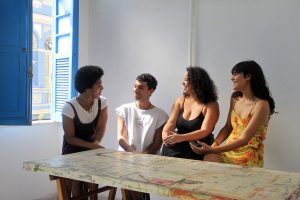





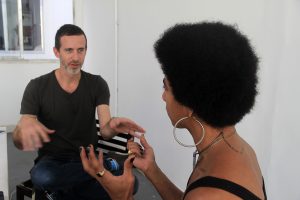


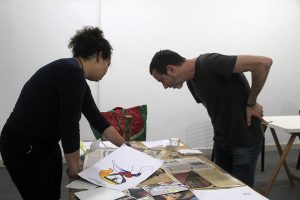



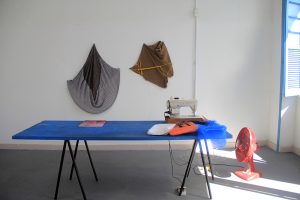








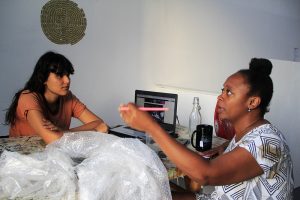
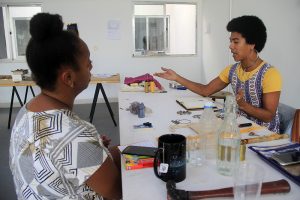
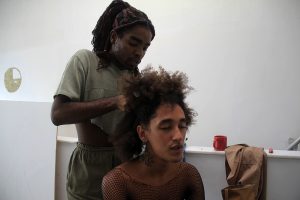

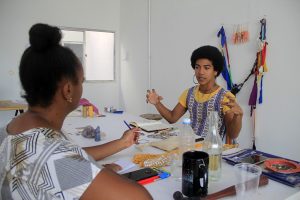



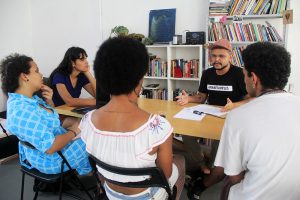

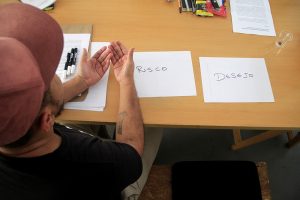

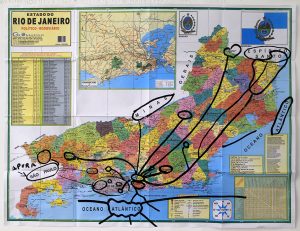






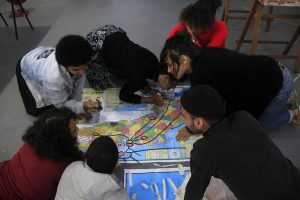



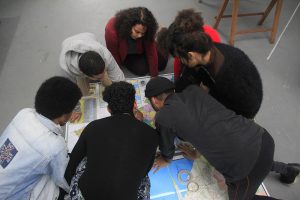


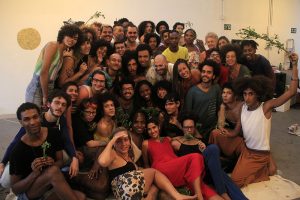





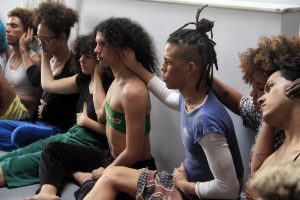


















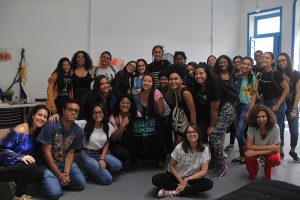

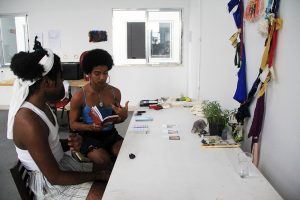



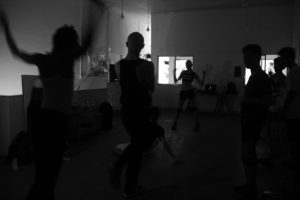




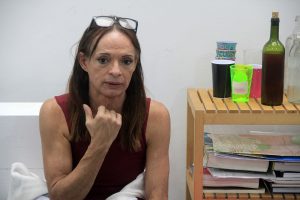
















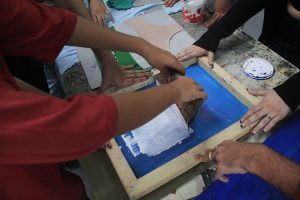

















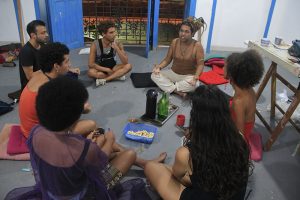












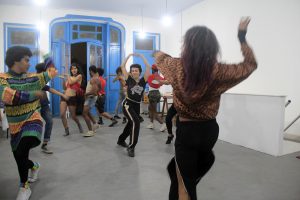

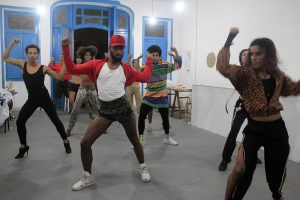













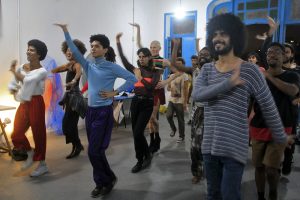










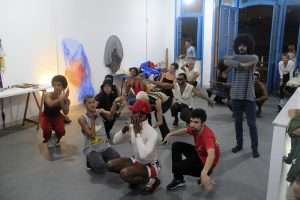











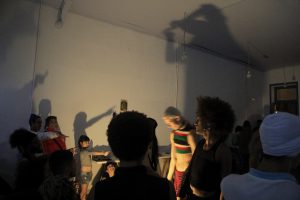








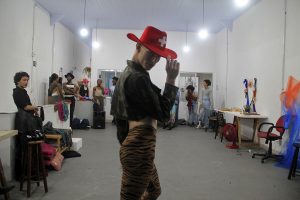





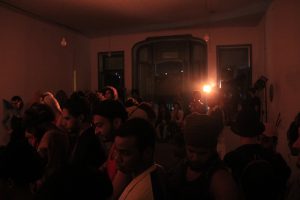
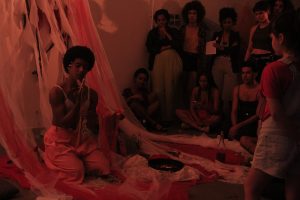















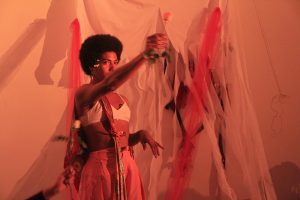






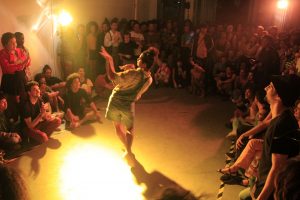









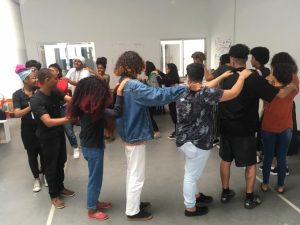





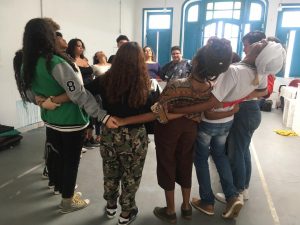




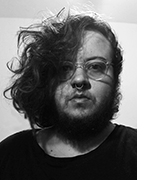

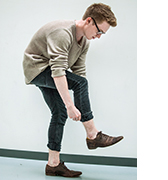






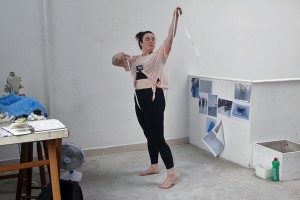












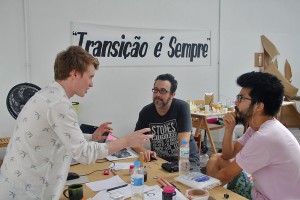



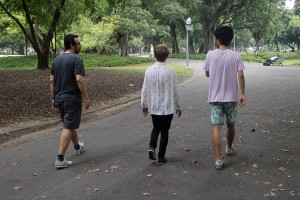



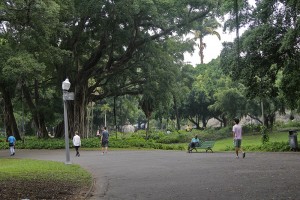











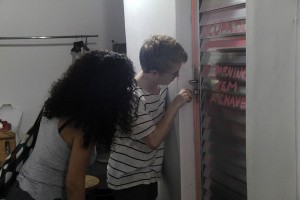



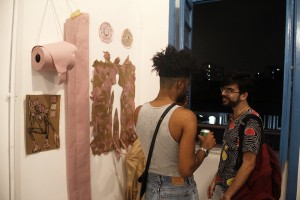


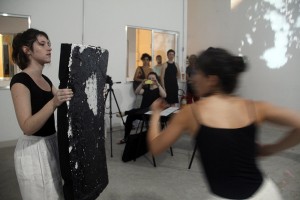

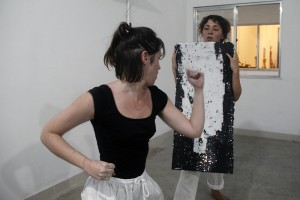













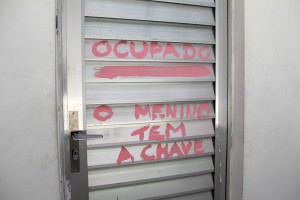




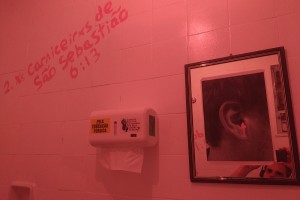


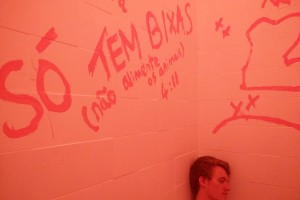




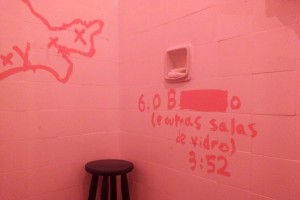
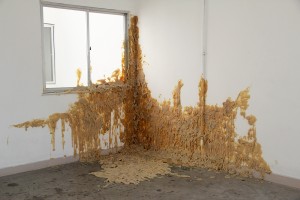







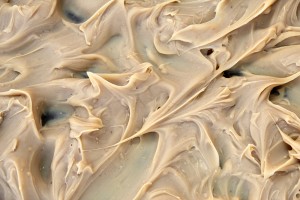


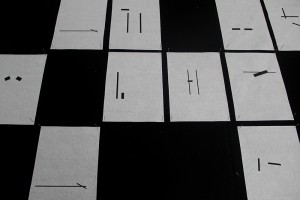













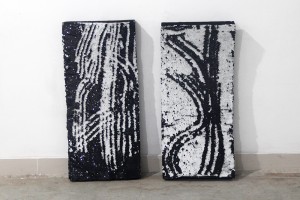












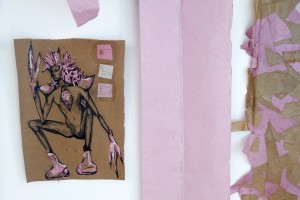
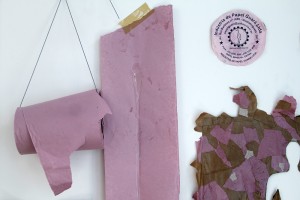








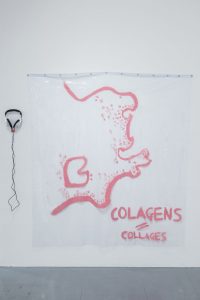


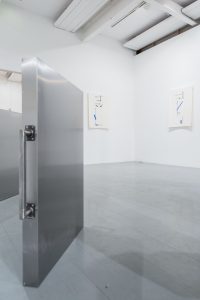






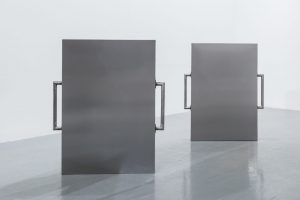






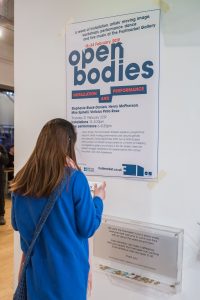




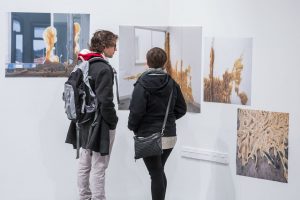



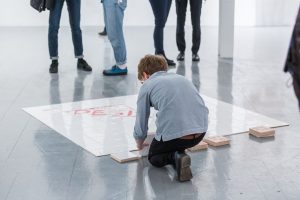






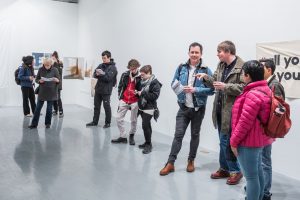
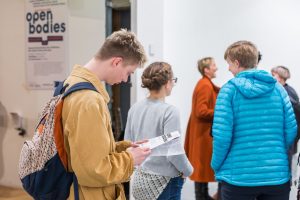

















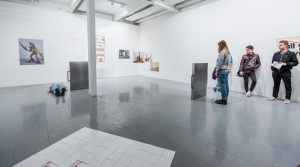















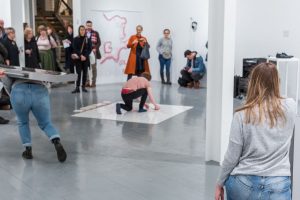

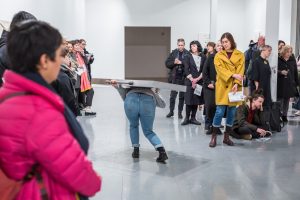



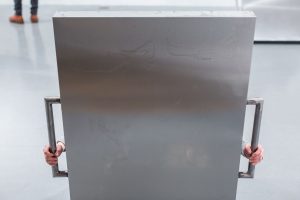





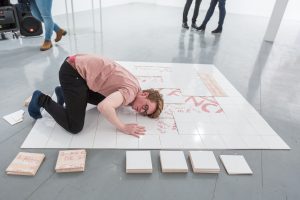

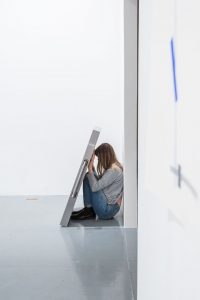
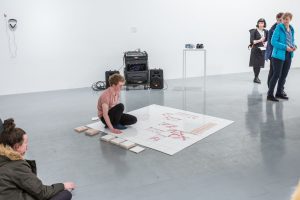






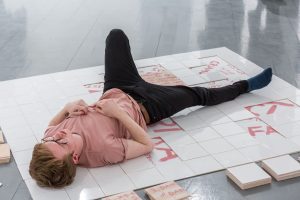













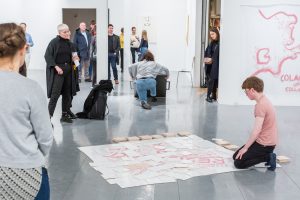



















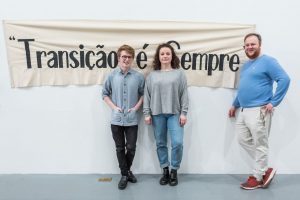



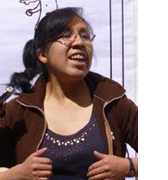
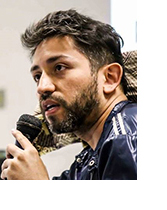
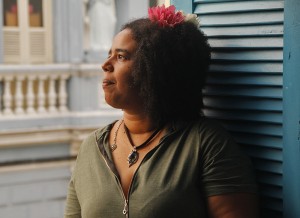



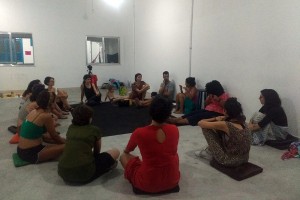


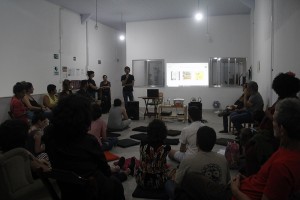








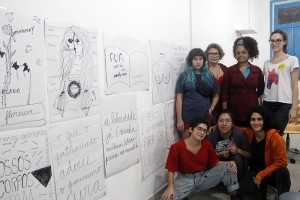













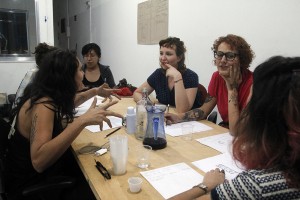




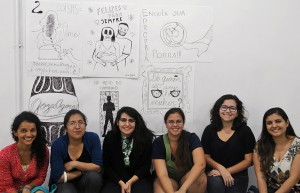






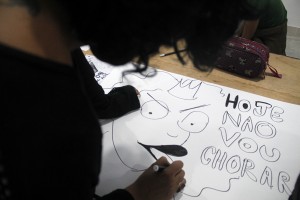







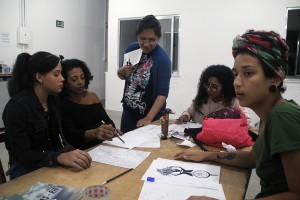









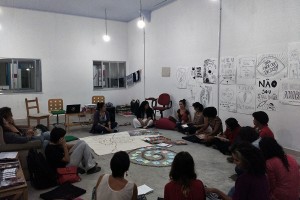






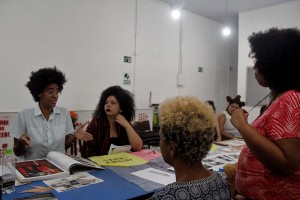





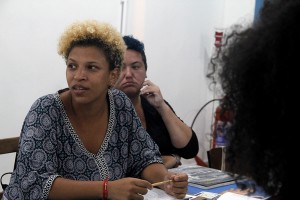
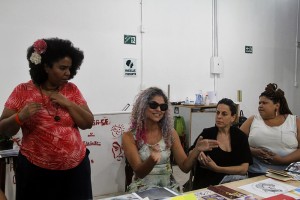










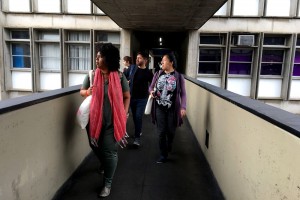
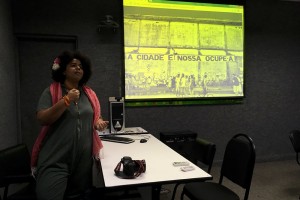

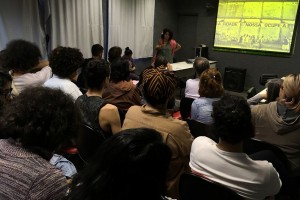




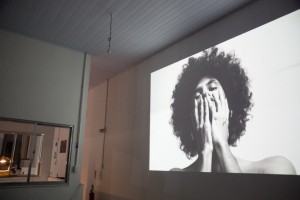



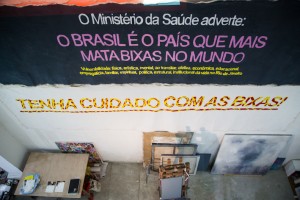

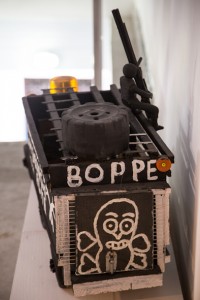




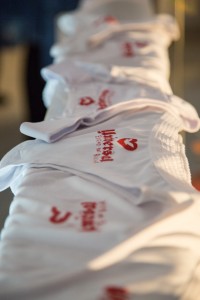





















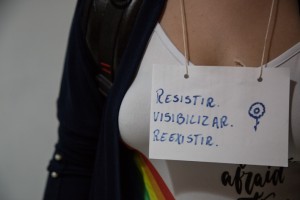







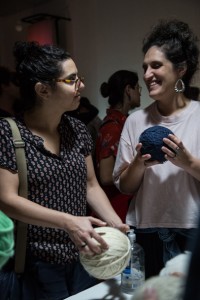

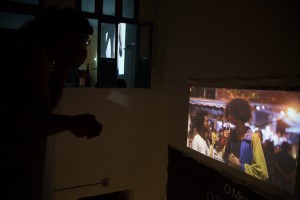

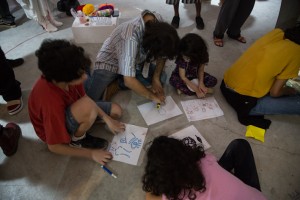





















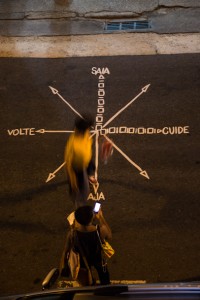



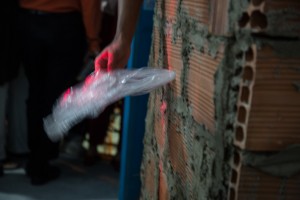





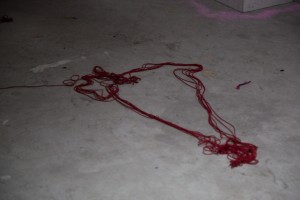





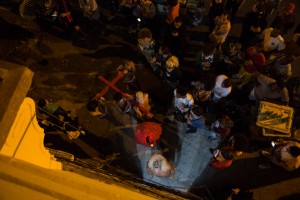






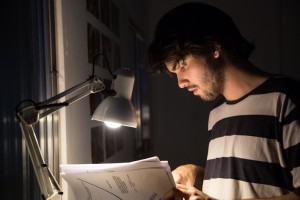

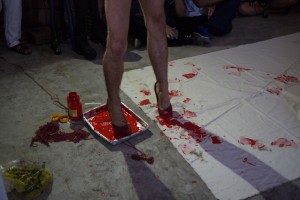













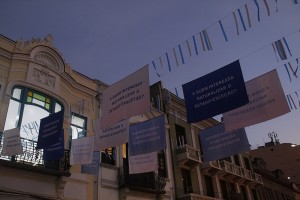













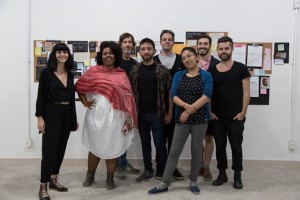









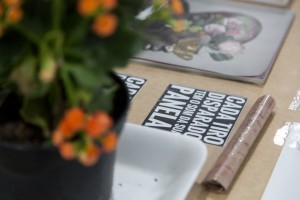



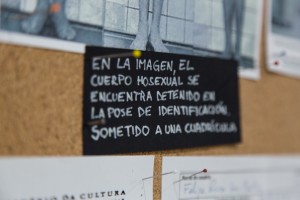



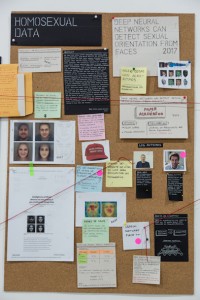

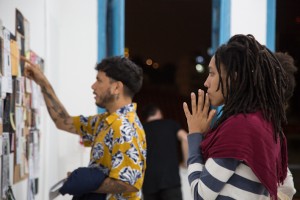
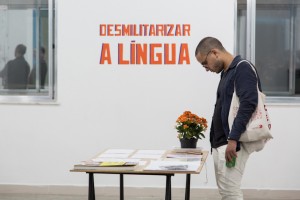


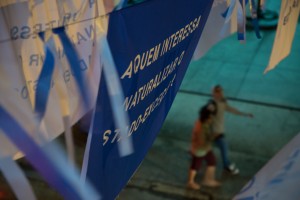




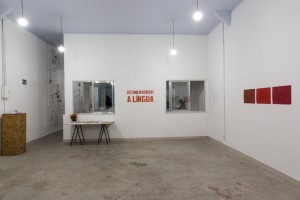
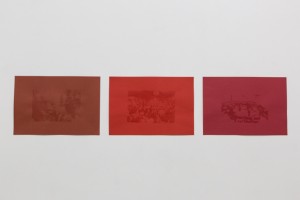

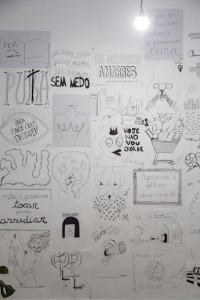
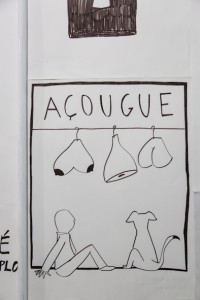
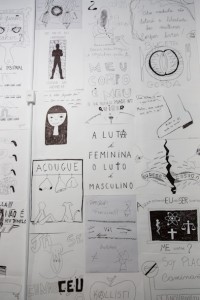


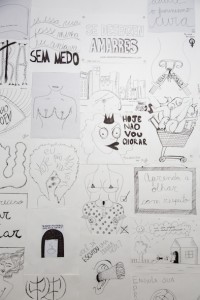





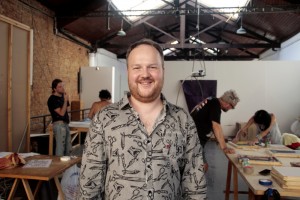


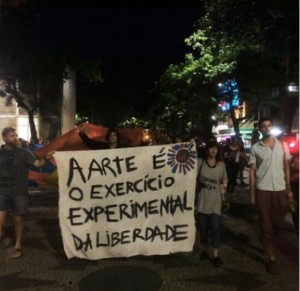
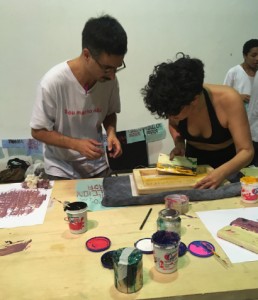






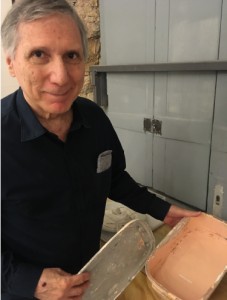


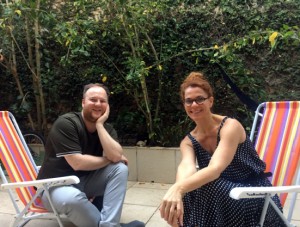




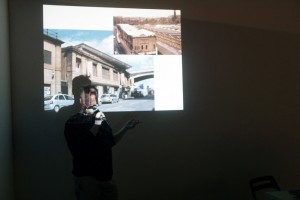






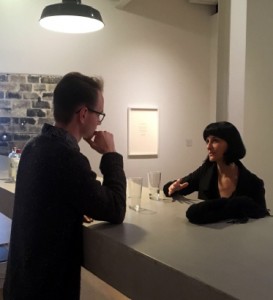


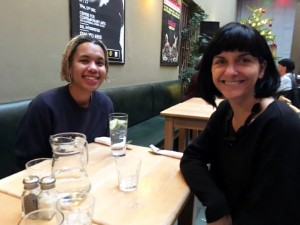









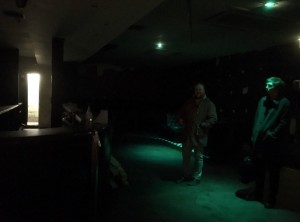
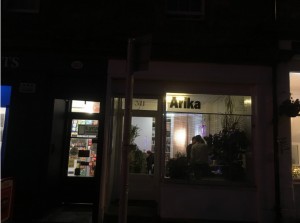
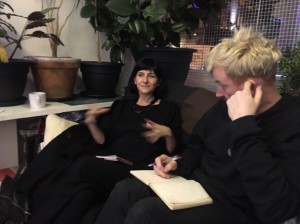



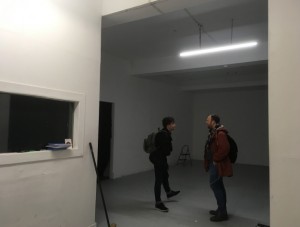









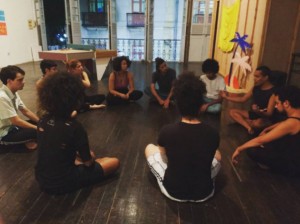



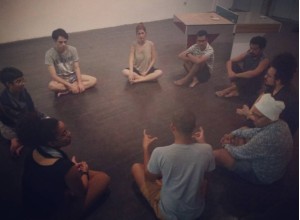












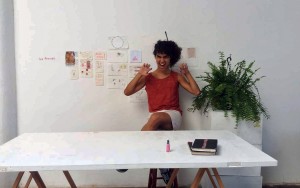





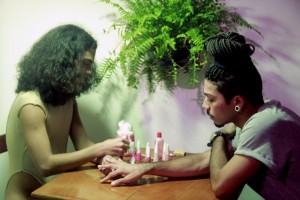

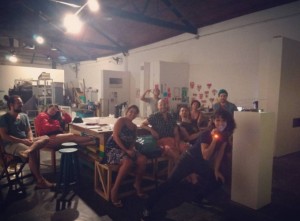



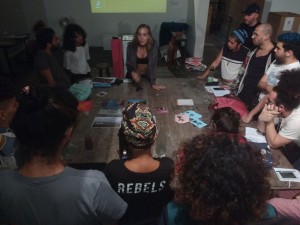





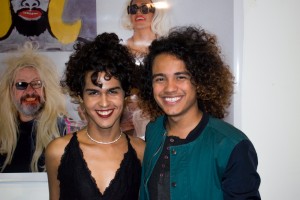







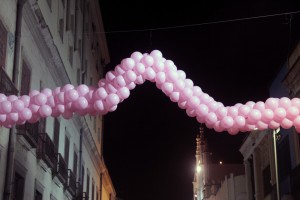
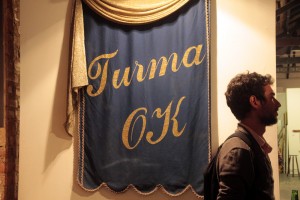


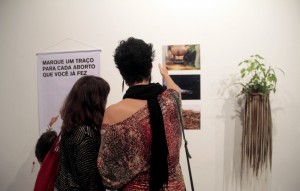


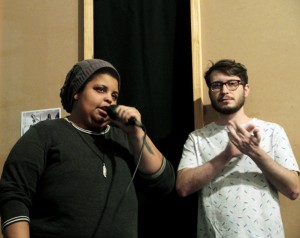




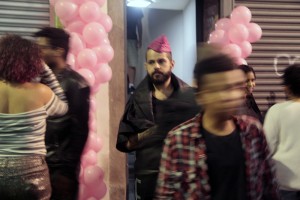



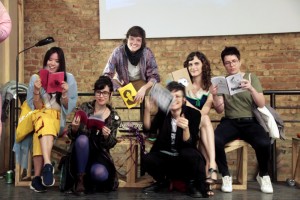


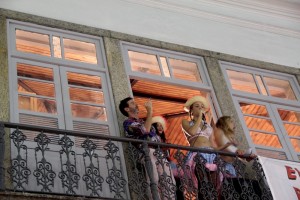






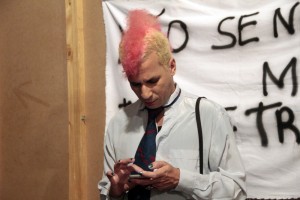

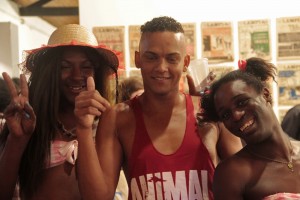




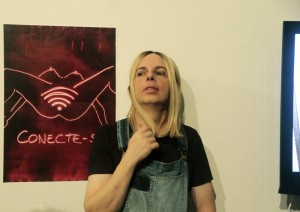












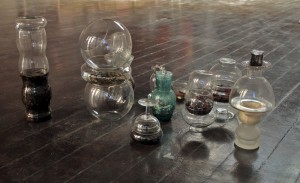







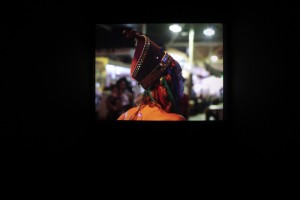
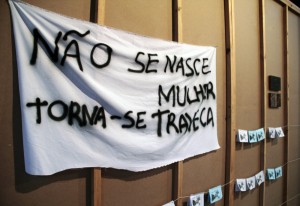



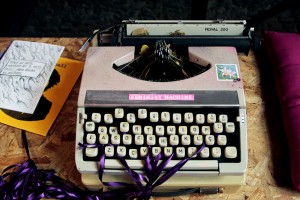






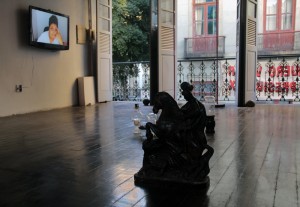


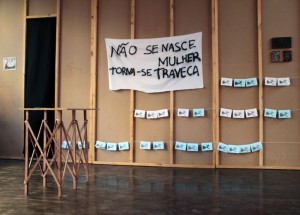







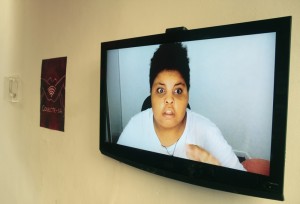
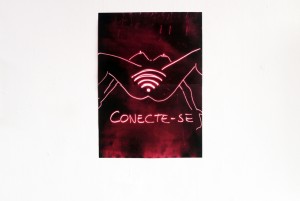

















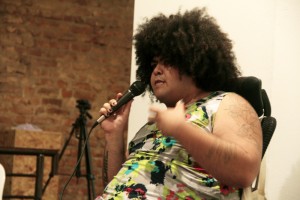



























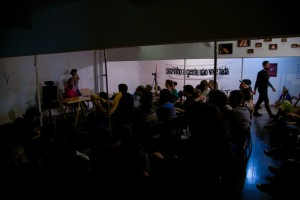
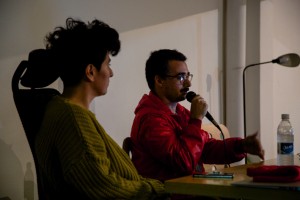







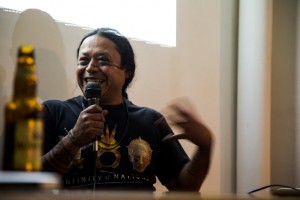








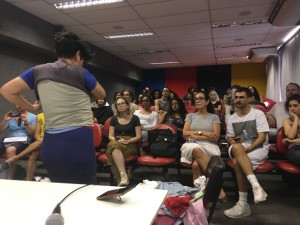










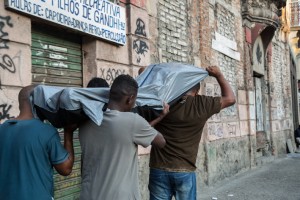












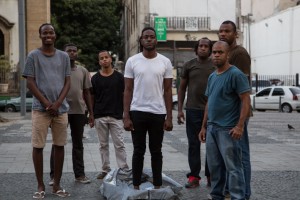
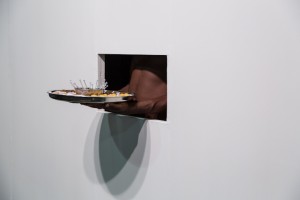


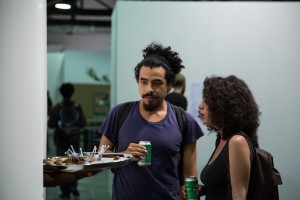



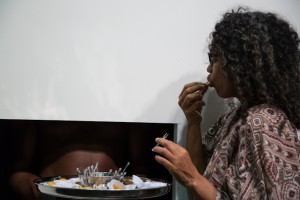




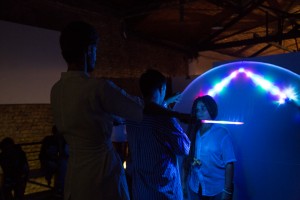





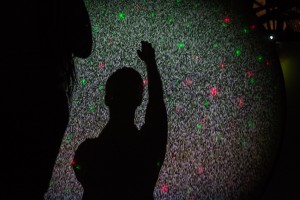


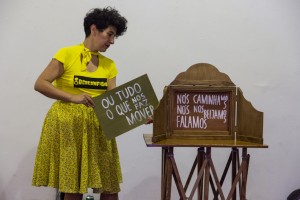

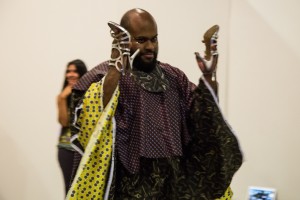

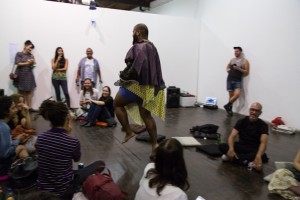

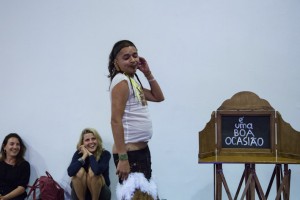



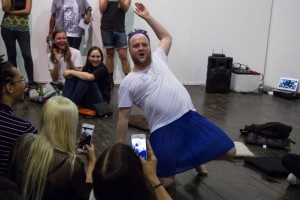

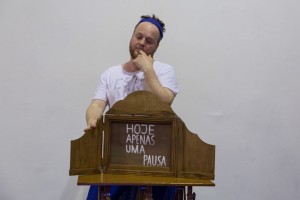


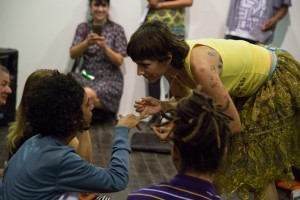


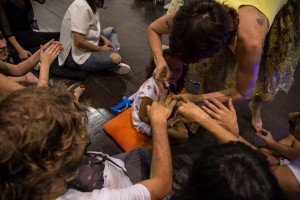





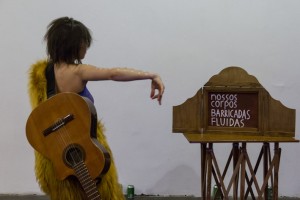




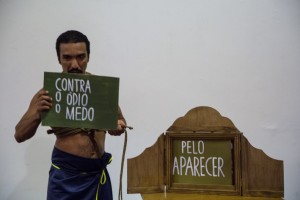





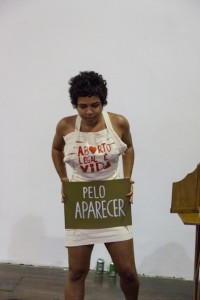
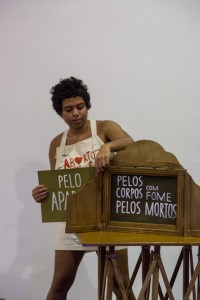





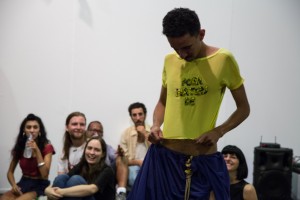
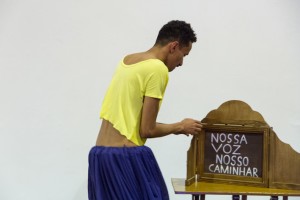
























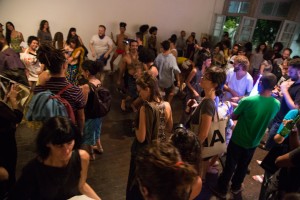
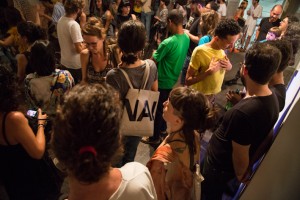



















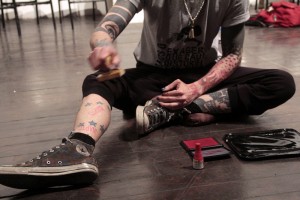







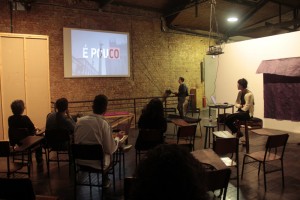









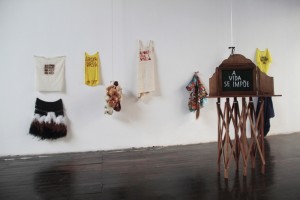










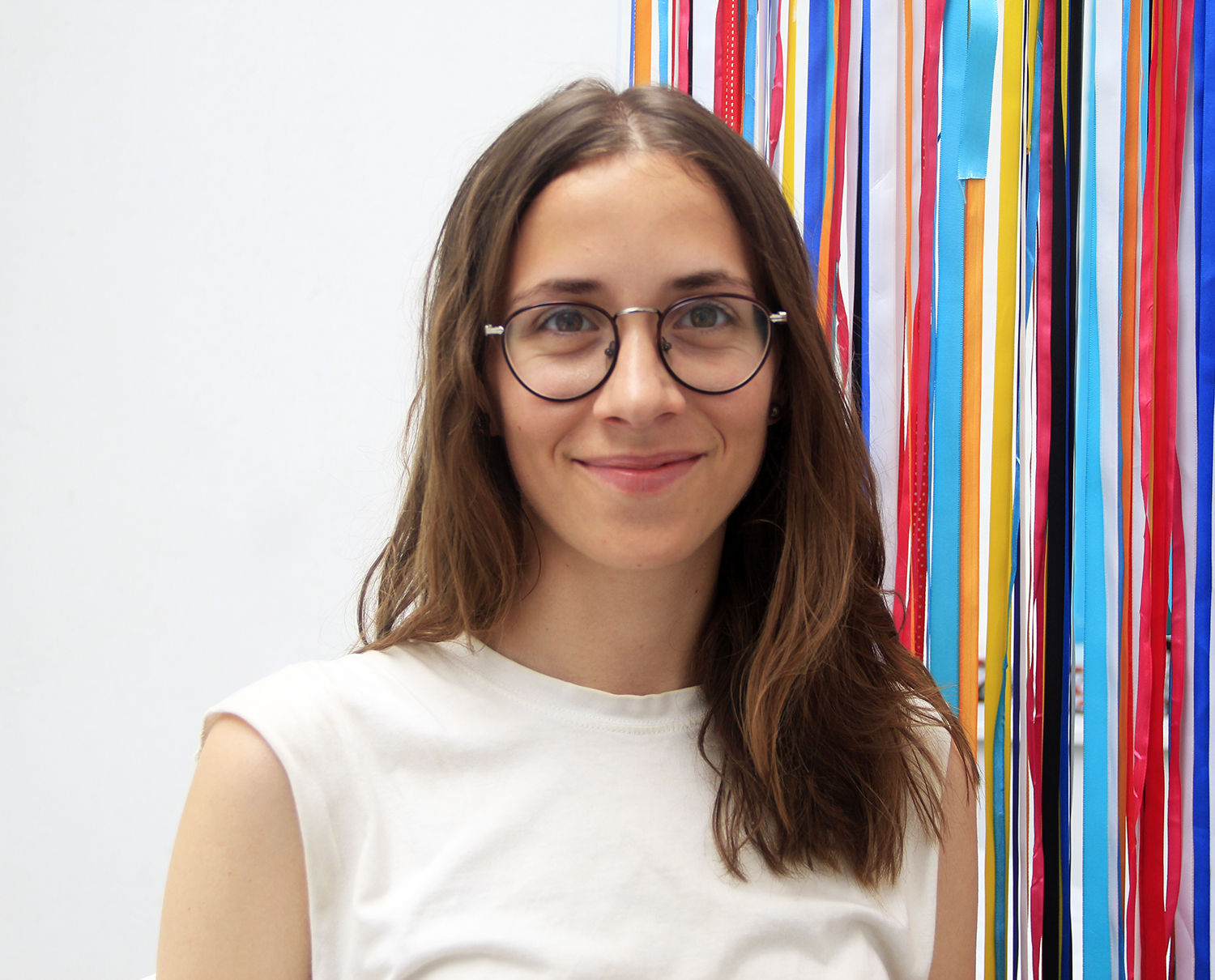
 Chloë Lum and Yannick Desranleau are multidisciplinary visual artists based in Montreal, Canada. Their work focuses on theatricality and the choreographic; in their performance work but also in their interest in staging tableaus and working with ephemeral materials that can be said to perform through redeployment and decay. The duo’s recent works investigate the agency of objects, the material condition of the body, and the transformative potential that bodies and objects exert upon each other. These interests are informed by Chloë’s experience with chronic illness and its effect on their collaboration as well the duo’s exploration of narrative tropes from literature, theatre and television.
Chloë Lum and Yannick Desranleau are multidisciplinary visual artists based in Montreal, Canada. Their work focuses on theatricality and the choreographic; in their performance work but also in their interest in staging tableaus and working with ephemeral materials that can be said to perform through redeployment and decay. The duo’s recent works investigate the agency of objects, the material condition of the body, and the transformative potential that bodies and objects exert upon each other. These interests are informed by Chloë’s experience with chronic illness and its effect on their collaboration as well the duo’s exploration of narrative tropes from literature, theatre and television.